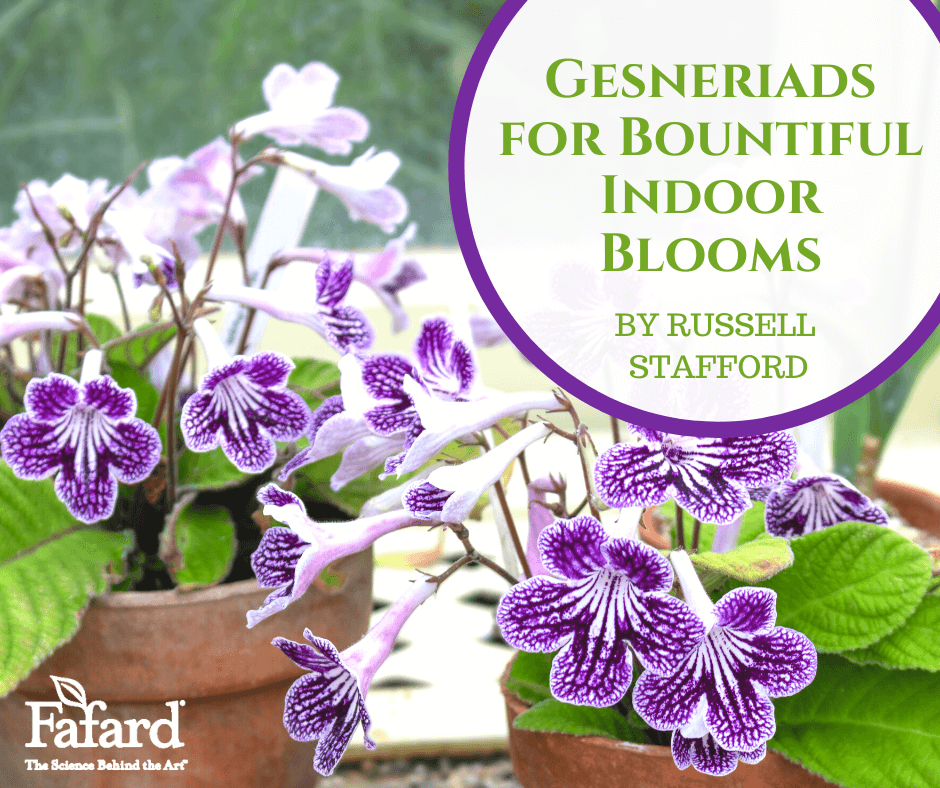
Showy, funnel-shaped flowers; attractive, rounded, or lance-shaped leaves; and an overall velvety to fuzzy texture characterize members of the family Gesneriaceae, home to many popular flowering house plants including gloxinias (Sinningia speciosa), African violets (Saintpaulia spp.), and others. Collectively known as gesneriads, they have a dubious reputation for being fussy in cultivation. In fact, many are quite easy to grow, provided conditions are not too dry, wet, or cold.
In almost all cases, gesneriads prefer a well-drained, organic-rich, moderately moist growing medium (allow the surface to dry between waterings). Peat-based potting mixes with lots of perlite or grit usually work well, such as Fafard Professional Potting Mix. Moderate fertility is also best (apply a balanced gesneriad or African violet fertilizer every couple of months or so). Most favor a bright but not overly sunny exposure, such as dappled shade or an east- or west-facing window.
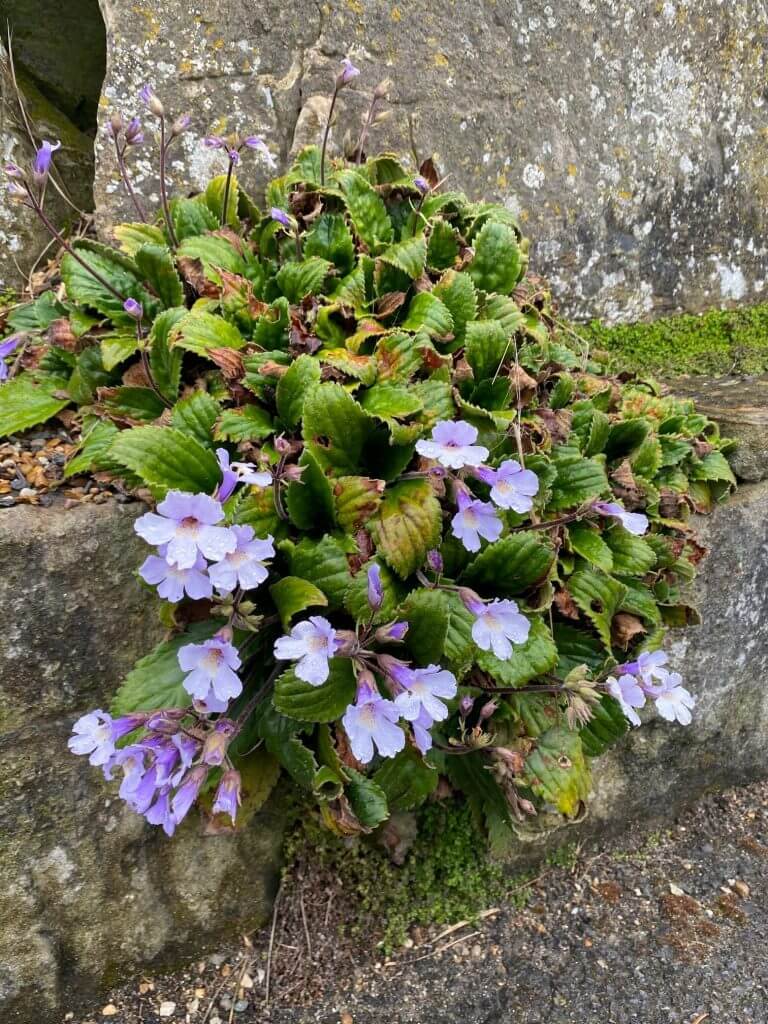
For some gesneriads, such as members of the genera Ramonda and Haberlea, anything above minus 15 degrees F or so is not “too cold”. These hardy gesneriads make good subjects for rock gardens and other well-drained, partly shaded garden sites into USDA Hardiness Zone 5. Most members of the family, however, are native to much milder, sub-tropical to tropical regions.
African Violets (Saintpaulia)
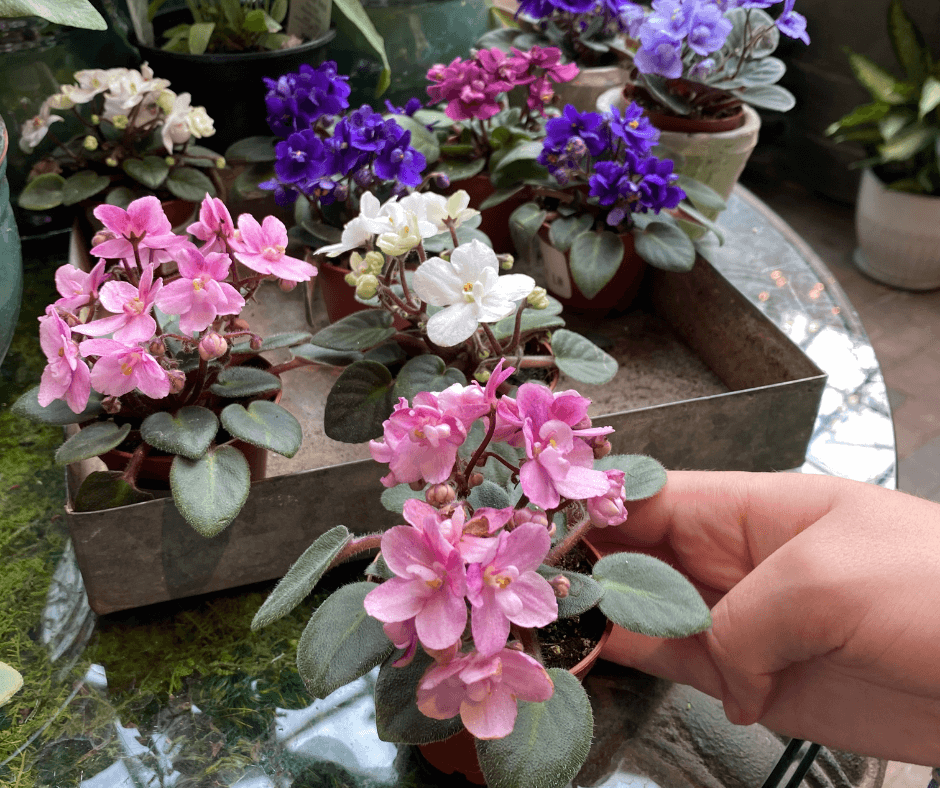
The approximately half-dozen species of Saintpaulia hail from mountainous areas of equatorial East Africa (i.e., Kenya and Tanzania). By far the most familiar member of the genus is Saintpaulia ionantha, parent of most of the hundreds of hybrids collectively known as African violets. These come in a wide range of floral colors and sizes, from miniatures (2 to 6 inches wide) to “standards” (10 to 24 inches wide) to “trailing” varieties that creep and cascade to even greater lengths. Flowering continues sporadically year-round. A number of cultivars sport variegated leaves or double or striped flowers – or all of the above.
Real enthusiasts might want to explore species other than Saintpaulia ionantha (e.g. S. brevipilosa and S. confusa), which are available from a handful of specialist growers. Also available are wild-type forms of Saintpaulia ionantha itself, which is an utterly charming, abundantly blooming thing with periwinkle-blue flowers (or white, in cultivar ‘Alba’).
All members of the genus – and just about all tropical gesneriads – are happiest with moderate temperatures (60 to 80 degrees F) and relatively high humidity. African violets in particular resent cold water, especially on their leaves, which causes spots. Saintpaulia aficionados typically use room-temperature water, applied from below by immersing the container’s base.
Gloxinias (Sinningia spp.)
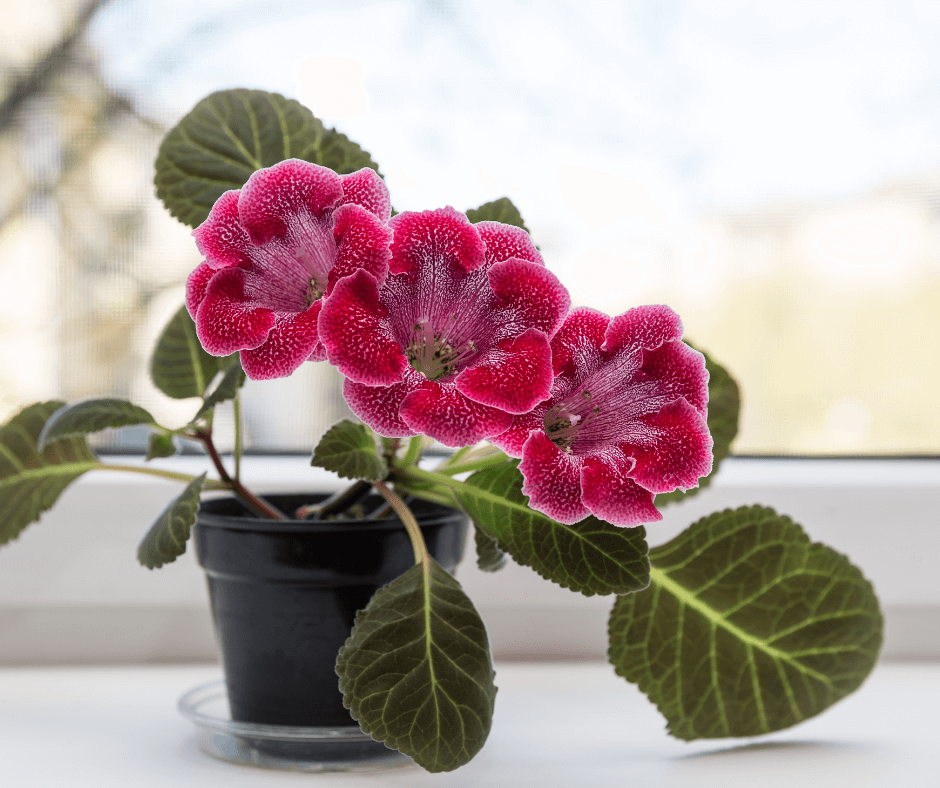
So-called gloxinias (which actually belong to the genus Sinningia) have similar preferences. Most gardeners know them by the familiar large-flowered hybrids of the tuberous-rooted Sinningia speciosa. These “florist gloxinias” produce flushes of velvety, funnel-shaped flowers in shades of red, purple, white, or combinations of the same. Plants may stop blooming and even die back temporarily if things get too cool or dry, but they can usually be easily coaxed back into growth.
Lesser known – but in some cases even more satisfactory as house plants – are the 60-plus other species of Sinningia and their hundreds of hybrids, which come in numerous forms, sizes, and colors. Outstanding hybrids include ‘Tante’, a cascading plant with lax stems loaded with pale mauve trumpets, and ‘Prudence Risley’, which bears a constant succession of deep rose-red trumpet-flowers on 10-inch stems. Miniature, “teacup” Sinningia hybrids such as the salmon-orange-flowered ‘High Voltage’ are a great fit for terrariums or other small niches.
Cape Primroses (Streptocarpus spp.)
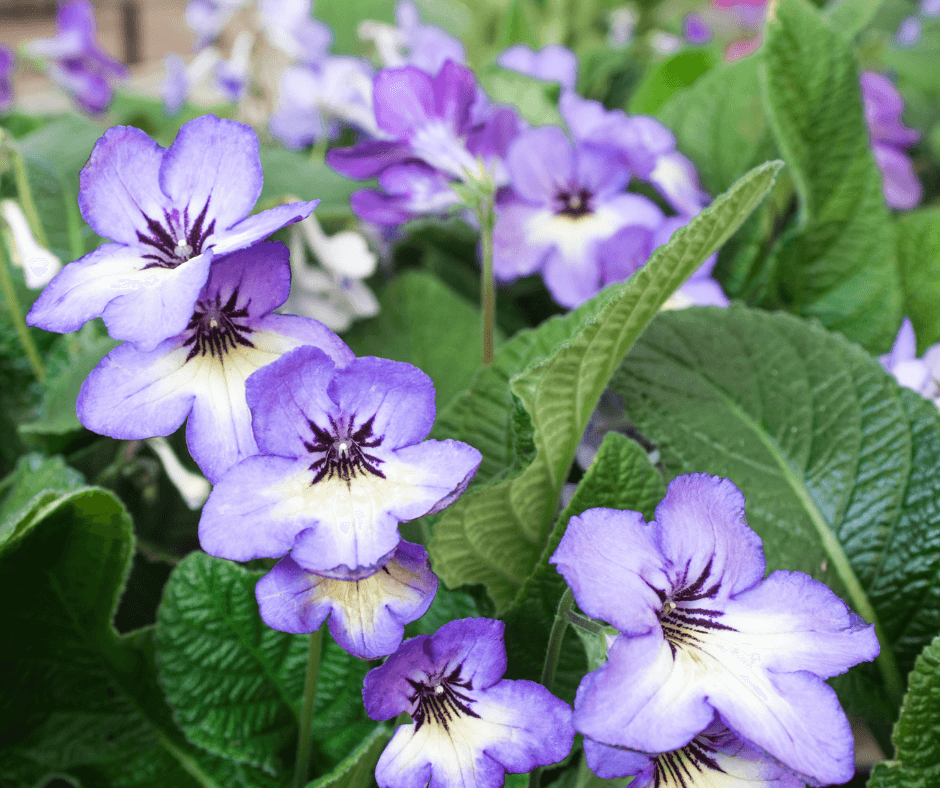
Arguably the most floriferous gesneriads are the many hybrids of Cape primrose (Streptocarpus spp.), whose narrow-throated blooms with violet-shaped lobes are borne continuously, conditions permitting. The flowers are held on wiry, 3- to 8-inch stems above rosettes of tongue-shaped leaves that superficially resemble primrose foliage. Flower color range spans most of the spectrum, in a wide variety of patterns from solid to striped to speckled to picotee-edged. Streptocarpus typically mature at around 10 to 12 inches wide, but miniatures such as ‘Little Red’ are half that size or less.
Other Popular Gesneriads
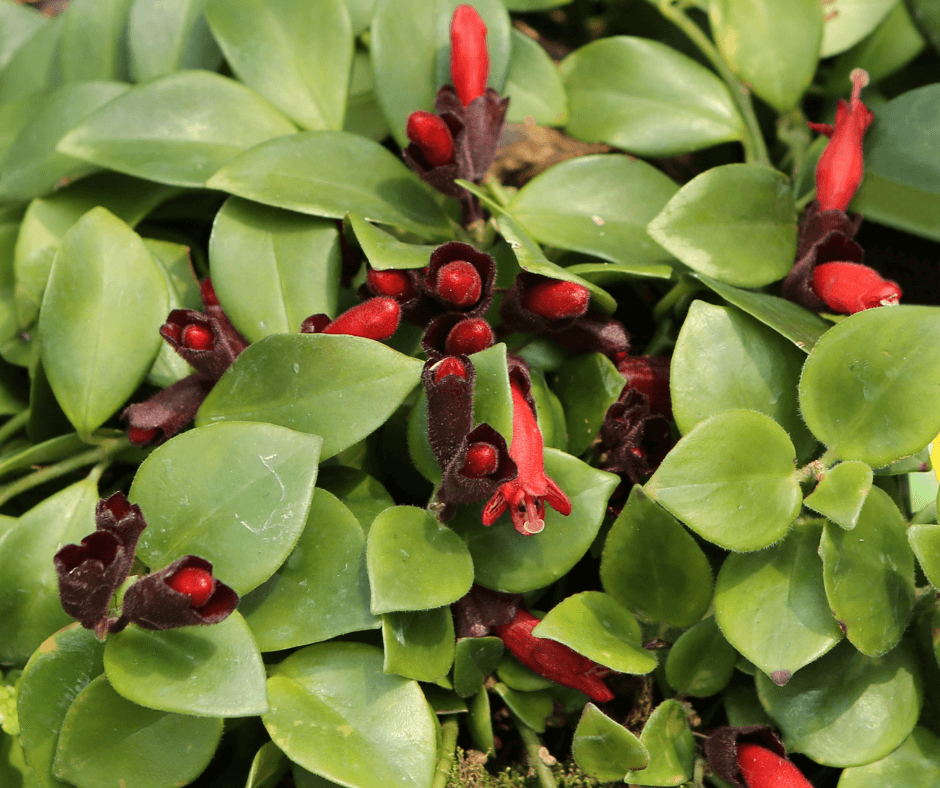
Hot water plant (Achimenes spp.)
The colorful trumpet-shaped flowers of these winter-dormant perennials are borne on leafy creeping stems that sprout from scaly rhizomes in the spring. Achimenes function well as house plants or in seasonal garden plantings.
Lipstick plant (Aeschynanthus spp.)
Clusters of beak-shaped red or orange flowers protrude from contrasting clasping sepals, on cascading stems lined with paired fleshy leaves. Lipstick plants – as well as the next three plant groups – are ideal subjects for hanging baskets in bright partly shaded locations such as an east window.
Goldfish plant (Columnea spp.)
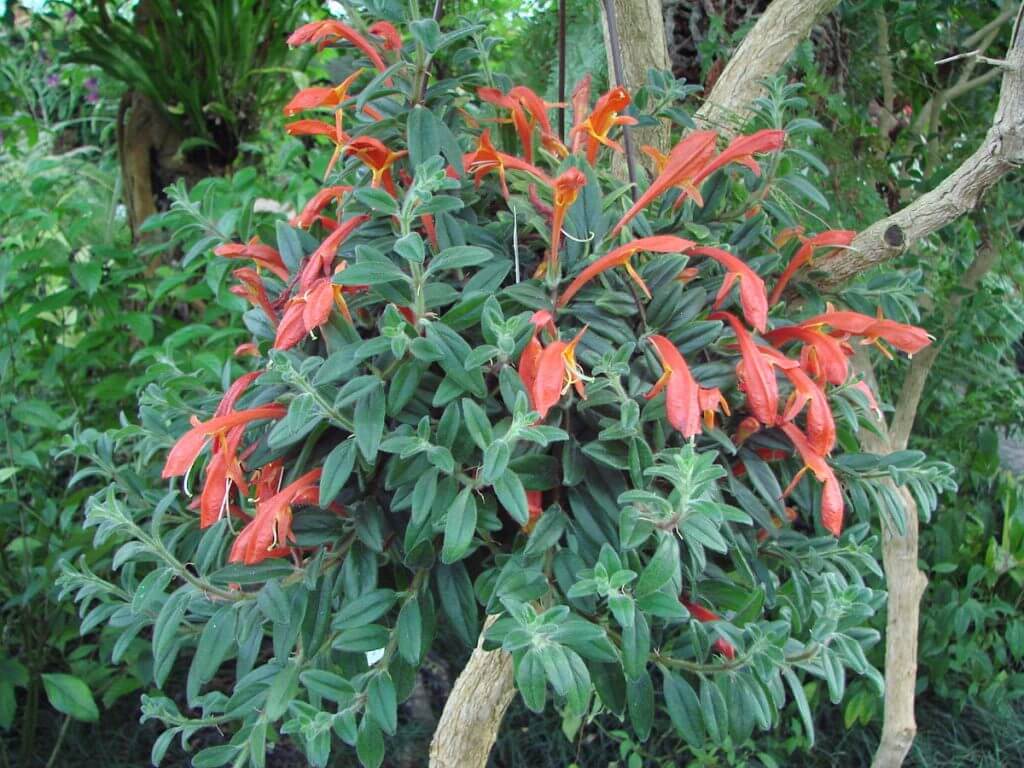
The common name refers not to the color of the flowers (typically red), but to their arching shape, with fin-like petals protruding from their undersides. Like lipstick plants, they’re mostly of trailing habit, doing and looking well in hanging baskets in bright partial shade.
Guppy plant (Nematanthus spp.)
Yellow flowers with prominent paunches peek from the axils of the narrow, glossy, leathery leaves, giving the appearance of little fish sheltering in the greenery.
Flame violet (Episcia spp.)
Rosettes of colorful fuzzy leaves – often netted with flamboyantly contrasting veins – are the main attraction of this diverse genus. That said, some Episcia hybrids are grown mostly for their red, orange, pink, or yellow flowers, which are showy in their own right.
Lesser-known Gesneriads
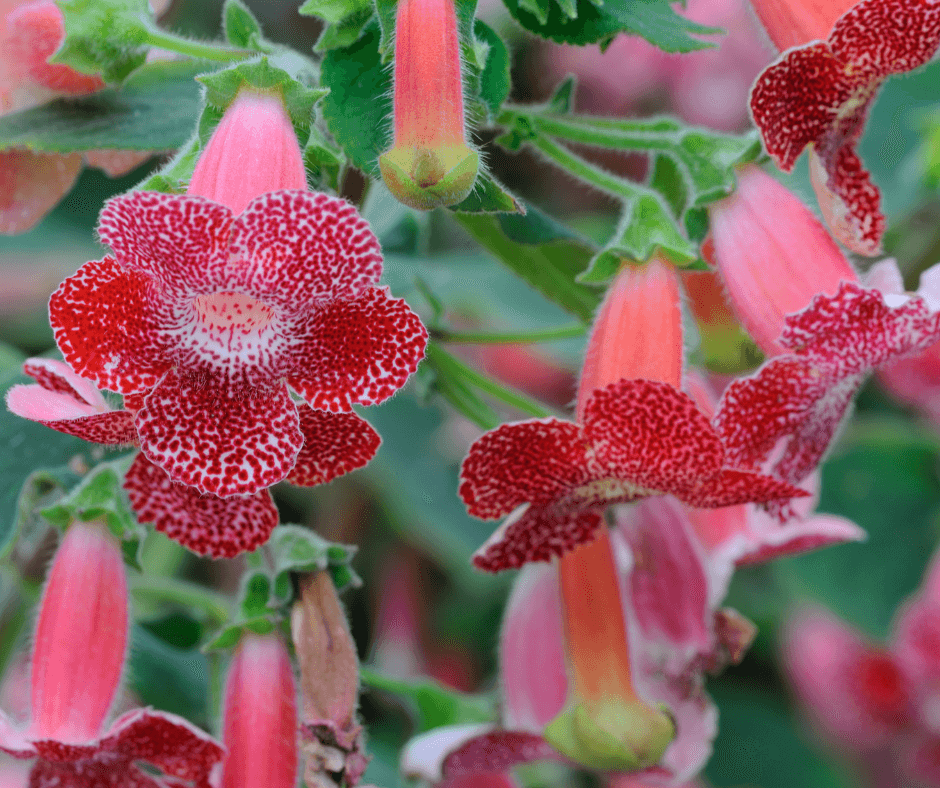
Lots of other wonderful (and easy) members of the Gesneriaceae are there for the exploring, including:
Codonanthe
Close relatives of Nematanthus, these easy-to-grow gesneriads from uplands of eastern Brazil feature a compact, pendant habit, fleshy leaves, and small white or yellow flowers that repeat through much of the year.
Kohleria
Felted bugles line the relatively tall stems of this diverse tropical New World genus, which encompasses more than 20 species and scores of hybrids. Most flower in red, pink, orange, or purple, with contrasting flecking on their lips.
Smithiantha
These Central American natives send up compact spires of red, orange, yellow, purple, pink, or white flowers from stout compact rhizomes in spring and beyond. Plants go dormant for the winter. Smithiantha and Achimenes have combined to produce numerous beautiful intergeneric hybrids (known as ×Achimenantha).
Upon seeing all of the diverse and gorgeous gesneriads there are to grow, most plant collectors get hooked fast. Try a few to brighten your indoors this winter.


